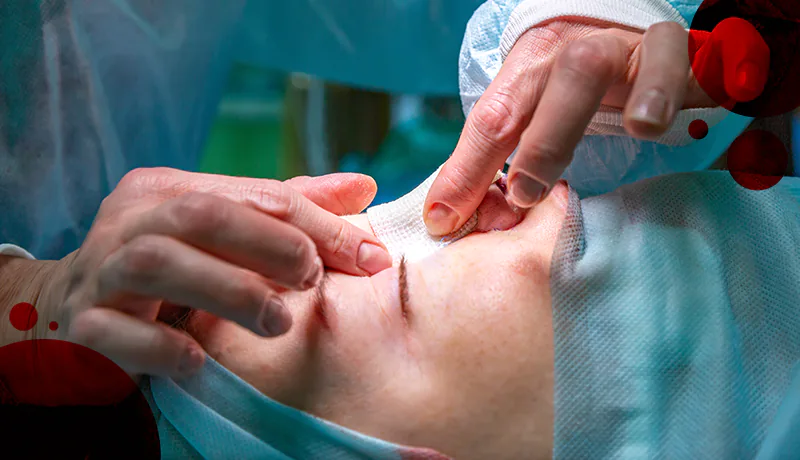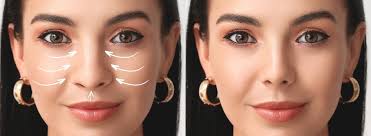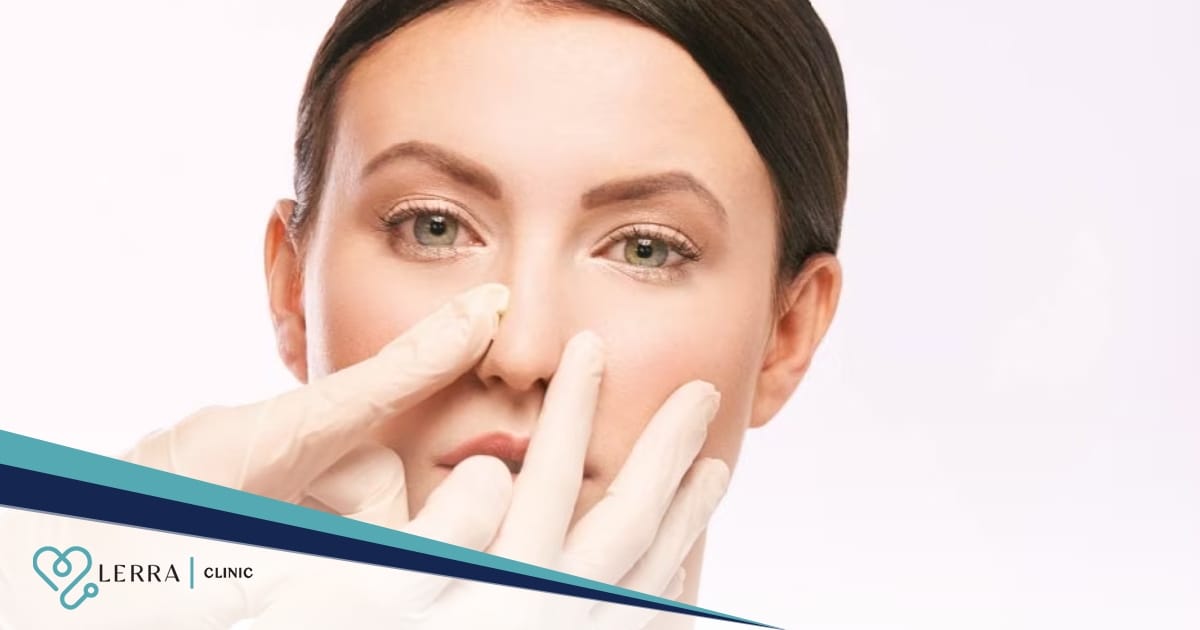Rhinoplasty, often called a “nose job,” is widely recognized for its aesthetic benefits. However, its functional capabilities, particularly in addressing nasal blockages and breathing issues, are just as important. LerraClinic, the best clinic in Turkey with over a decade of experience, specializes in rhinoplasty procedures that enhance appearance and significantly improve respiratory function. In this comprehensive guide, we will explore the functional aspects of rhinoplasty for Nasal Blockage and Breathing Issues
What is Functional Rhinoplasty?

Rhinoplasty for Nasal Blockage and Breathing Issues
Functional rhinoplasty is a surgical procedure designed to address structural abnormalities in the nose that impair normal breathing. Unlike cosmetic rhinoplasty, which focuses primarily on aesthetics, functional rhinoplasty aims to restore or improve the nose’s function. Often, these two approaches are combined to provide patients with a solution that is both functional and visually pleasing.
Common Causes of Nasal Blockage and Breathing Problems
Several factors can lead to nasal obstruction and breathing difficulties, including:
1. Deviated Nasal Septum
The nasal septum is the wall of cartilage and bone that separates the two nostrils. When it is crooked or displaced, it can block airflow, leading to difficulty breathing.
2. Enlarged Turbinates
Turbinates are structures inside the nose that help filter and humidify air. If they become enlarged due to allergies or chronic sinus infections, they can obstruct airflow.
3. Nasal Polyps
These non-cancerous growths in the nasal passages can block airflow and reduce the sense of smell.
4. Collapsed Nasal Valve
The nasal valve is the narrowest part of the nasal airway. A weak or collapsed nasal valve can significantly restrict airflow.
5. Trauma or Injury
Nasal fractures or injuries can alter the shape and structure of the nose, leading to functional issues.
6. Congenital Abnormalities
Some individuals are born with structural abnormalities that impede normal breathing.
Who is a Candidate for Functional Rhinoplasty?

Rhinoplasty for Nasal Blockage and Breathing Issues
Functional rhinoplasty is suitable for individuals experiencing:
- Persistent nasal congestion not alleviated by medications
- Difficulty breathing through one or both nostrils
- Frequent sinus infections
- Sleep disturbances due to nasal obstruction
- Snoring or sleep apnea caused by nasal blockages
The Consultation Process
At LerraClinic, we prioritize a thorough consultation process to ensure optimal outcomes. Here’s what you can expect:
1. Medical History Review
We’ll discuss your medical history, including any previous nasal surgeries, allergies, or breathing problems.
2. Physical Examination
A detailed examination of your nose, both internally and externally, will help identify structural issues.
3. Diagnostic Imaging
CT scans or X-rays may be used to provide a comprehensive view of the nasal structures.
4. Discussing Goals
We’ll discuss your goals and expectations, whether they are purely functional or a combination of functional and aesthetic improvements.
How Functional Rhinoplasty Works
1. Preoperative Preparation
Before surgery, you may need to stop certain medications, avoid smoking, and follow specific dietary restrictions. These preparations will be discussed during your consultation.
2. Anesthesia
The procedure is typically performed under general anesthesia to ensure your comfort.
3. Surgical Techniques
The exact technique used will depend on the underlying issue:
- Septoplasty: Straightens a deviated septum.
- Turbinate Reduction: Shrinks enlarged turbinates.
- Nasal Valve Repair: Strengthens or reconstructs the nasal valve.
- Polypectomy: Removes nasal polyps.
4. Combination with Cosmetic Rhinoplasty
If desired, functional rhinoplasty can be combined with cosmetic changes to enhance the appearance of the nose while improving its function.
5. Postoperative Care
After surgery, you’ll receive detailed instructions on managing swelling, pain, and nasal congestion. Regular follow-ups will ensure proper healing and optimal results.
Benefits of Functional Rhinoplasty
Functional rhinoplasty offers numerous benefits, including:
- Improved airflow and breathing
- Reduced snoring and better sleep quality
- Alleviation of chronic sinus issues
- Enhanced sense of smell
- Increased physical performance, particularly in athletes
- Better overall quality of life
Recovery Process
1. Initial Recovery
You may experience swelling, bruising, and nasal congestion for the first week. Pain is usually minimal and can be managed with prescribed medications.
2. Follow-Up Visits
Regular follow-ups at LerraClinic will ensure proper healing. Any splints or stitches will be removed during these visits.
3. Long-Term Recovery
Most patients notice significant improvement in breathing within a few weeks. Full recovery, including resolution of swelling, can take up to a year.
Risks and Complications

Rhinoplasty for Nasal Blockage and Breathing Issues
While functional rhinoplasty is generally safe, it does carry some risks, including:
- Infection
- Bleeding
- Scarring
- Persistent nasal obstruction
- Changes in nasal shape
Choosing an experienced surgeon, such as those at LerraClinic, minimizes these risks and ensures the best possible outcome.
Why Choose LerraClinic?
LerraClinic is renowned for its expertise in both functional and cosmetic rhinoplasty. Here’s why patients from around the world choose us:
- Experienced Surgeons: Our team has over a decade of experience in advanced rhinoplasty techniques.
- State-of-the-Art Facilities: We utilize the latest technology for accurate diagnosis and precise surgery.
- Customized Approach: Each procedure is tailored to meet the unique needs and goals of the patient.
- Comprehensive Care: From consultation to recovery, we provide unparalleled support and guidance.
- Affordability: We offer world-class care at competitive prices, making us a top choice for medical tourism.
Frequently Asked Questions (FAQs)
1. How long does the surgery take?
Functional rhinoplasty typically takes 1 to 3 hours, depending on the complexity of the procedure.
2. Is the surgery painful?
Most patients report minimal pain, which can be effectively managed with medications.
3. When can I return to work?
You can usually return to work within 1 to 2 weeks, depending on the nature of your job.
4. Will my insurance cover the procedure?
Many insurance plans cover functional rhinoplasty if it’s deemed medically necessary. Check with your provider for specific details.
5. Can functional rhinoplasty improve my quality of sleep?
Yes, by alleviating nasal blockages, functional rhinoplasty can significantly enhance sleep quality and reduce snoring.
Conclusion
If you’re struggling with nasal blockages or breathing issues, functional rhinoplasty could be the solution you’ve been searching for. At LerraClinic, we combine expertise, technology, and personalized care to deliver outstanding results. Whether you’re looking to improve your breathing, enhance your appearance, or both, our team is here to guide you every step of the way.
Don’t let nasal issues compromise your quality of life. Contact LerraClinic today to schedule your consultation and take the first step toward better breathing and improved well-being.
Contact us today and get the best offer!
Related Articles:
Step-by-Step Rhinoplasty Journey with LerraClinic in Istanbul

